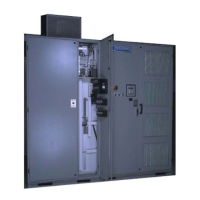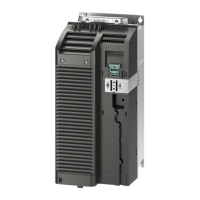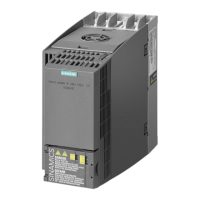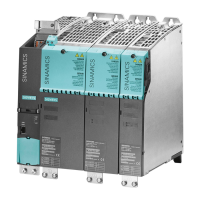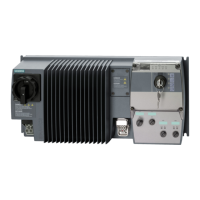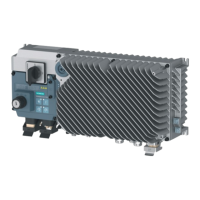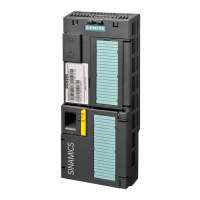7.8 Thermal Over Temperature Rollback
The Thermal Over Temperature Rollback feature provides a longer run-time for an air-cooled
drive that has lost some of its cooling capability due to a clogged air lter, higher ambient, or
some other cooling issue.
The purpose of this algorithm is to allow a drive to continue functioning after receiving two cell
Over Temperature (OT) alarms, or a transformer OT alarm, but at a lower torque current output.
This allows the drive and associated process to continue operating until a new thermal
equilibrium is reached or until the lowest process torque requirement is reached.
• If a new thermal equilibrium is reached, the drive is able to operate indenitely.
• If the lowest process torque requirement is reached, the drive OT trip may only be delayed
until an OT trip eventually occurs.
The thermal time constants for all cells are essentially the same, approximately 100 seconds.
This makes the algorithm universal for all cell types, although the primary use is for air-cooled
drives.
Every cell has a thermal alarm and fault built-in. The transformer also has several thermal
switches installed. Using these early warning indicators, the rollback algorithm attempts to
prevent a drive trip by reducing the real current output and thereby reducing the heating losses
in the drive. If the response is adequate, the drive torque limit will ramp the torque current
between a point that will reset the alarms and a point at which the alarms comes back on. In this
slow, cyclic action, the drive will establish a new thermal equilibrium point at a reduced torque
level.
To prevent problems, the algorithm will do nothing until two cell OT alarms are detected (or a
transformer OT alarm, which is weighted as two cells). When this occurs, the algorithm will
capture and store the torque command from the limit logic and use this as the starting point,
snapping to the IdsRef magnitude immediately, then ramping down the torque limit toward the
minimum level.
The torque limit continues to ramp down as long as two or more OT alarms are active, and until
the lower programmable limit is reached. Once the alarm conditions have reset, the torque limit
will ramp back up to the menu based torque limit at the same rate as set by the parameter, or
until the alarms become active again. If the lower limit is low enough to prevent a thermal trip,
the drive will remain on indenitely.
Since the algorithm rolls back the torque current level, and subsequently the speed of the motor,
it is only appropriately used for loads that have a direct torque/speed relationship where
shedding speed will reduce the torque requirement. The process must also be tolerant of the
reduced speed and torque to make use of this feature.
The following parameters aect the performance of the algorithm:
• Min Rollback Level (7171): This parameter establishes the lower boundary of the rollback
algorithm. It is used to bound the lower limit to which the torque limit can be reduced. If set
to 100 %, the algorithm is disabled.
• Rollback Ramp Rate (7172): This parameter sets the slope or rate of the ramp. It establishes
the slope of the ramp as how long it would take the value to go from 1 PU to zero. It is used
for both the ramp down (toward the minimum level), and for the recovery ramp (toward the
menu motor torque limit).
When working properly, the torque limit will have a sawtooth, cyclic waveform with the
frequency determined by the slope and the up and down travel between the upper and lower
limits, based on seeking a new thermal equilibrium. This is shown in the following gure.
Operating the Control
7.8 Thermal Over Temperature Rollback
NXGPro+ Control Manual
200 Operating Manual, A5E50491925A
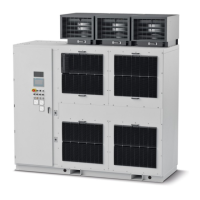
